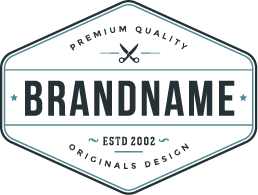Awesome Fixed Call-To-Action Section!

Visit our shop
84 Emerson Road
Opening Hours
Mon-Fri: 10am-5pm
Book an appointment
+00 123 123 123

Awesome Fixed Call-To-Action Section!
Awesome Fixed Call-To-Action Section!
Error: Contact form not found.
Recently, the Food Safety and Standards Authority of India (FSSAI) issued a landmark directive that targets beverages labelled as “ORS” (Oral Rehydration Solution) but which do not meet the medically correct formulation. In parallel, the Delhi High Court granted an interim stay on key parts of this directive, creating a complex situation in public health terms.
As a physician who treats hepatic disease and supports children and adults through severe illness and recovery, I wish to address: why authentic ORS matters; how these misleading drinks pose health risks (including for liver health); what the recent regulatory action means; and what caregivers and health-practitioners must do.
The true ORS is one of the great breakthroughs in modern medicine for diarrhoeal disease. According to reports, it was first scaled up in populations in the 1970s and remains essential because it addresses not just fluid loss but electrolyte imbalance and the mechanism of absorption of sodium-glucose co-transport.
In effect: when a patient (especially a child) suffers from diarrhoea and vomiting, the body loses water, sodium, potassium, and bicarbonate (or citrate). The correct ORS replaces these losses, supports absorption of water in the intestine, prevents circulatory collapse, and prevents downstream organ effects.
For the liver (and other organs) this is relevant: severe dehydration or electrolyte disturbances can precipitate acute hepatic stress, may worsen underlying liver disease, or in very ill children result in multisystem involvement including the liver. Although ORS itself doesn’t treat liver disease, failure to manage dehydration properly can lead to worse overall outcomes for vulnerable organs.
On 14 October 2025, FSSAI issued a directive that no food or drink product that does not meet the WHO-recommended ORS formulation may use the term “ORS” in its brand name, label, advertisement or trademark — whether as a prefix, suffix or standalone.
The directive noted that many drinks labelled as ORS are in fact sugar-rich beverages with inadequate electrolyte content, thereby misleading consumers.
Shortly thereafter, the Delhi High Court granted an interim stay on key parts of the regulation following a petition by a manufacturer (allowing sale or disposal of existing stock) while the matter is adjudicated.
Thus we have a situation where, from a regulatory standpoint, the standard has been set but the enforcement is momentarily paused in parts — leading to a grey area for consumers and health-care providers.
Children under five are especially vulnerable to dehydration from diarrhoea and vomiting. In India, diarrhoea remains a leading cause of mortality in this age group.
When a beverage marketed as “ORS” is in fact a sugar-heavy drink with low electrolyte content:
From a hepatic standpoint:
Therefore, the mislabelling of ORS is not a benign marketing mistake — it has direct implications for children’s health and for vulnerable adult populations including those with liver disease.
Given the above, the implications are:
While the FSSAI’s directive is much welcomed — it addresses a long-standing issue of misleading marketing — the high court stay introduces a complication: the enforcement is not yet absolute. The result is:
In summary: The recent regulatory push by FSSAI is a welcome correction addressing a serious issue — that many products labelled as “ORS” are in fact sugar-laden drinks unsafe for use in dehydration. But the interim stay by the Delhi High Court means the marketplace still has ambiguity.
For clinicians, parents and caregivers — particularly where children or patients with liver/organ disease are involved — the message is clear: do not rely on label alone. Ensure correct ORS formulation, understand the risks of incorrect substitutes, and respond early in dehydration. The health of children and vulnerable adults depends on the correct solutions — not mimics.
As a liver transplant surgeon, I cannot over-emphasise: every time the body is stressed (through dehydration, vomiting, electrolyte imbalance) the liver and other organs are put on the back foot. Using the right ORS is a simple, yet vital, step in protecting organ health and overall recovery.
Stay hydrated. Stay safe. Use genuine ORS.
— Dr. Bipin Vibhute
Recent Comments